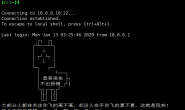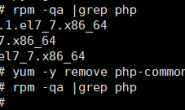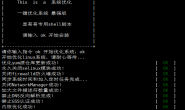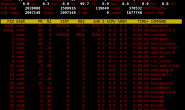1、系统启动的过程
①:按电源
②:BIOS自检,硬件检测
③:MBR引导
④:进入GRUB菜单,这里进入的单用户模式或者救援模式
⑤:加载内核
⑥:运行系统进程,使用system管理
⑦:读取系统运行级别 /etc/systemd/system/default.target
⑧:初始化系统 /usr/lib/systemd/system/sysinit.target
⑨:启动开机自启动服务(并行启动) /usr/lib/systemd/system/*
⑩:运行getty文件,进入登录页面 /usr/lib/systemd/system/getty.target
centos 6和centos 7启动对比
centos 6 centos 7
串行启动 并行启动
启动速度慢 启动速度快
容易启动异常 不会启动异常
init进程管理 system管理
2、运行级别
[root@lixian ~]# ll /usr/lib/systemd/system/runlevel*.target
/usr/lib/systemd/system/runlevel0.target -> poweroff.target
/usr/lib/systemd/system/runlevel1.target -> rescue.target
/usr/lib/systemd/system/runlevel2.target -> multi-user.target
/usr/lib/systemd/system/runlevel3.target -> multi-user.target
/usr/lib/systemd/system/runlevel4.target -> multi-user.target
/usr/lib/systemd/system/runlevel5.target -> graphical.target
/usr/lib/systemd/system/runlevel6.target -> reboot.target
runlevel0.target -> poweroff.target :关机
runlevel1.target -> rescue.target :单用户模式,修改root用户密码
runlevel2.target -> multi-user.target:多用户模式
runlevel3.target -> multi-user.target:多用户模式
runlevel4.target -> multi-user.target:多用户模式
runlevel5.target -> graphical.target :桌面模式
runlevel6.target -> reboot.target :重启模式
显示当前系统的运行级别
systemctl get-default
设置运行级别
systemctl set-default runlevel3.target
3、systemd
systemd(system daemon)是解决系统启动跟系统管理的一种解决方案
1、采取并行启动
2、system管理,不在init.d的脚本
3、只关闭正在运行的进程,centos-6是所有的进程关闭
4、支持快照
5、关闭进程时,会关闭所有的相关进程
system相关的目录
/usr/lib/systemd/system/* #所有系统开机自启动的服务列表目录
/etc/systemd/system/ #系统主要配置目录
/run/systemd/system/ #系统运行过程中产生的临时程序
systemctl系统管理命令
systemctl start nginx #启动
systemctl status nginx #显示启动状态
systemctl stop nginx #关闭
systemctl restart nginx #重启
systemctl reload nginx #平滑重启
systemctl mask nginx #禁用这个服务
systemctl unmask nginx #解除禁用
systemctl enable nginx #加入开机自启动
systemctl disable nginx #取消开机自启动
使用systemtcl status 服务时的状态
loaded #程序已经完成一次加载
active(running) #服务正在运行状态
active(exited) #程序没有在运行,系统已经完成一次完整的启动退出
active(waiting) #程序已经完成一次加载,但是需要等待某个事件
inactive #没有运行
enable #开机自启动
disable #没有加入开启自启动
static #无法被系统管理
failed #配置文件错误
显示当前系统运行级别所有服务的启动状态
systemctl list-unit-files
系统日志
/var/log/messages #查看系统日志
journalctl -n 20 #显示系统重要的日志,最后20行内容
journalctl -f #实时显示系统日志输出
journalctl -p err #按照日志级别进行显示
journalctl -u sshd #显示指定的服务的日志
journalctl -xe #到达对应的服务的错误位置
系统主机名的配置
hostname
[root@lixian ~]# hostnamectl
Static hostname: lixian
Icon name: computer-vm
Chassis: vm
Machine ID: 2a5b570068634bc4968a0c33163dcc23
Boot ID: feba7b783ac14fd3bf42e6e0314bd9bb
Virtualization: vmware
Operating System: CentOS Linux 7 (Core)
CPE OS Name: cpe:/o:centos:centos:7
Kernel: Linux 3.10.0-957.el7.x86_64
Architecture: x86-64
永久修改主机名:
/etc/hostname #主机名的配置文件
hostnamectl set-hostname lixian
系统的字符集
echo $LANG #显示当前系统的字符集
export LANG=zh_CN.UTF-8 #临时修改,重新登录失效
/etc/locale.conf #字符集配置文件
localectl set-locale LANG=zh_CN.UTF-8 #永久修改,重新登录生效





